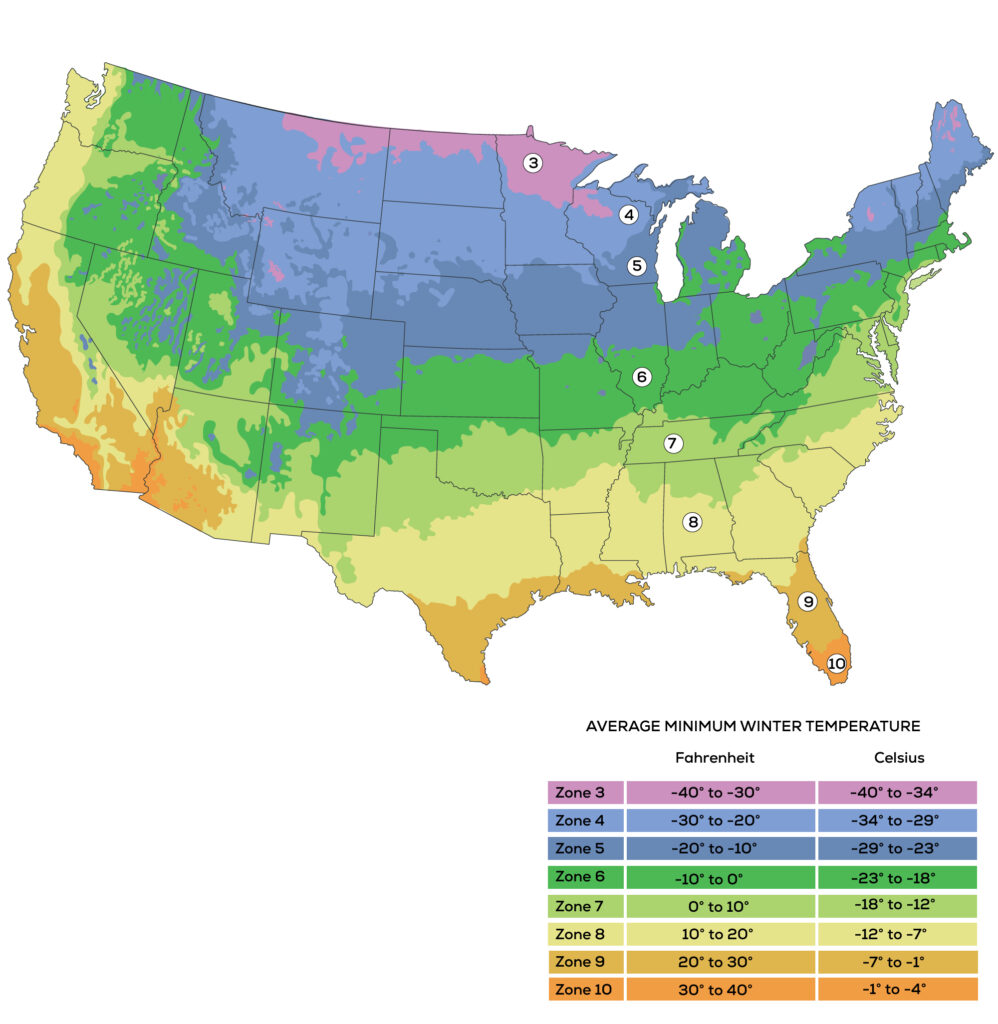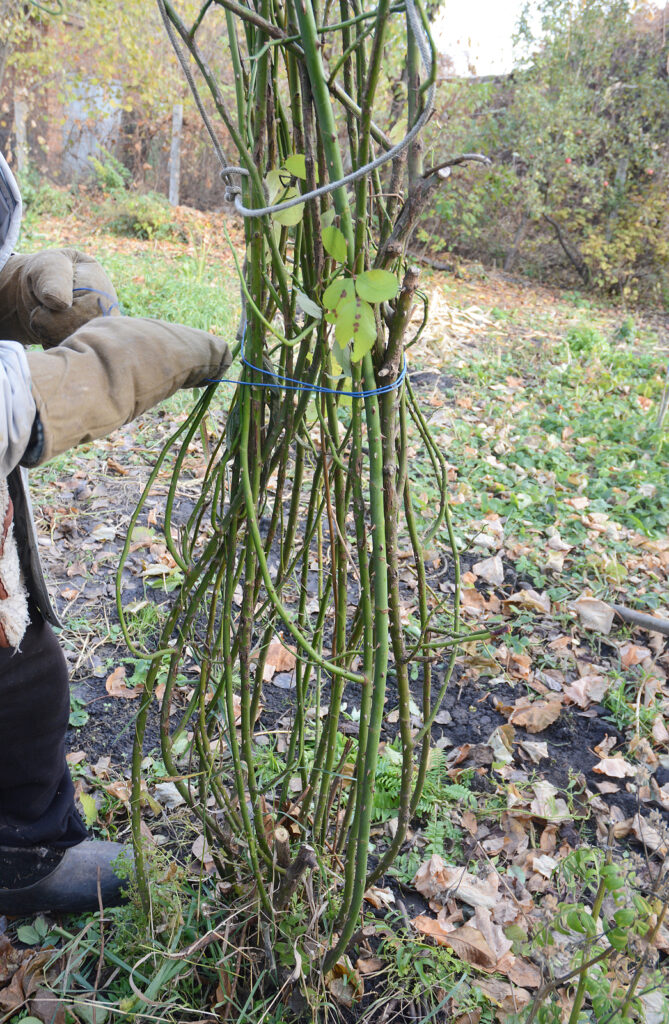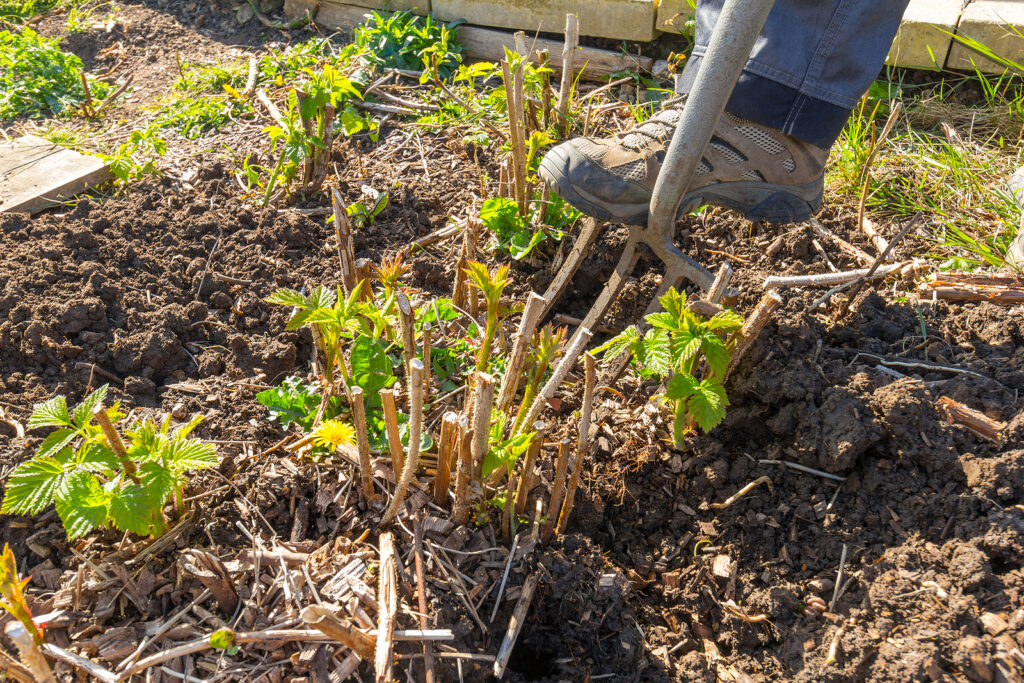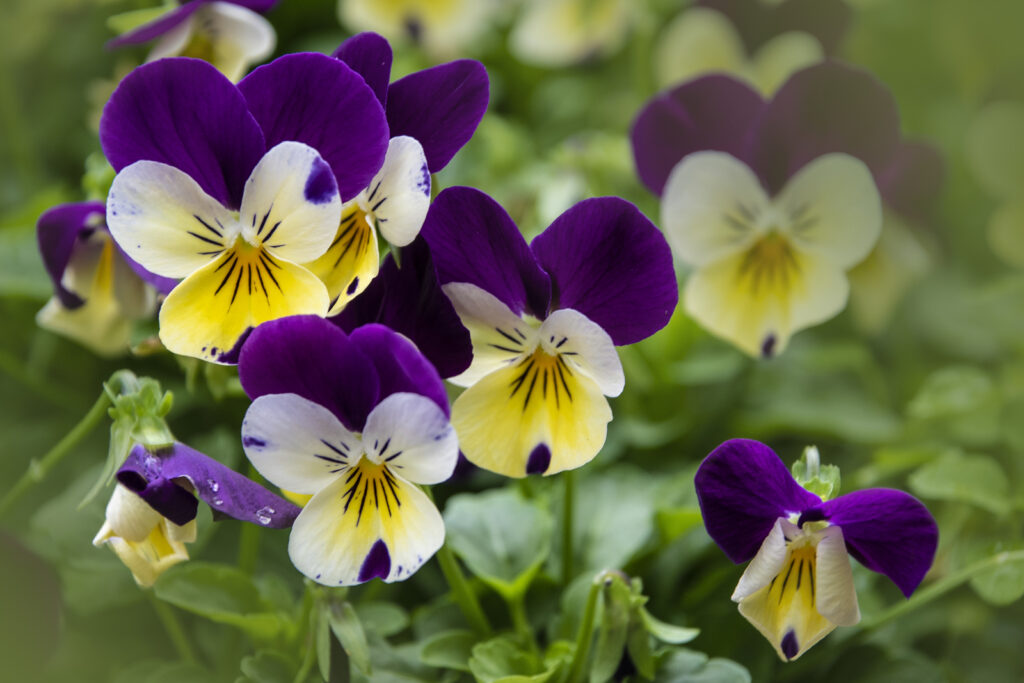November brings the end of the growing season to most gardens in the Northern Hemisphere. Daylight grows shorter and temperatures steadily cool. But the soil is still warm from summer and planting of shrubs and trees can be done this month. Most perennials and annuals are fading; that means garden cleanup should follow and initial preparation of planting beds for next spring can begin.
Here is a zone-by-zone to-do list for November. You’ll find planting and garden care tips for trees and shrubs, perennials, annuals, bulbs, the lawn, and houseplants.
Use the USDA Hardiness Zone Map to check your zone if you are unsure. Now is the time to get the garden ready for the coming winter.

Trees & Shrubs
Zones 7-11: Plant deciduous and evergreen trees and shrubs. Trees and shrubs may be transplanted safely by the later part of the month. Prepare hedge sites if not already done and complete planting as soon as possible, Water new plantings deeply. Fertilize established plants when dormant. Mulch azaleas and rhododendrons and other acid-loving plants with peat moss or acid leafmold. Spray rhododendron and azalea buds with a bird deterrent. Wrap trunks of young trees to prevent sunscald. Stake newly planted trees. Put windbreaks in place if needed. Mulch broad-leaved evergreens. Take hardwood cuttings when leaves have fallen. Rake leaves and compost them. Watch for pests and signs of disease.
Zones 5-6: Water evergreens deeply until the ground freezes; water both narrow-leaved and “needle” evergreens and broad-leaves like rhododendrons. Deep watering now is important for spring growth. Most kinds of woody plants that shed their leaves in autumn can be planted until real winter weather arrives. Fertilize deciduous and evergreen trees and shrubs when dormant. Wrap trunks of young trees to prevent sunscald. Put windbreaks around newly set shrubs, especially those in exposed locations; use burlap or storm fencing. Put mouse guards, and other winter protection in place. Stake newly planted trees. Mulch broad-leaved evergreens. Prune back unwieldy shrub growth and cut out dead branches. Rake leaves and compost them. Look for overwintering pests; remove and destroy them.
Zones 1-4: Water evergreens deeply before the ground freezes solid. Put winter protection in place including mouse guards, and windbreaks. If protecting plants with soil mounds at base, mulch when mounds have frozen. Check winter protection for shrubs to make sure they are secure. Wrap trunks of young trees to prevent sunscald. Spray evergreens with antidesiccant if not yet done. Remove and destroy overwintering pests by spraying with all-season horticultural oil.

Roses
Zones 7-11: Roses can be transplanted safely through the end of the month. Do not fertilize roses again until spring even if still blooming. Water deeply if weather is dry. Prune off soft, weak growth. Cut back long canes to prevent wind damage. Clean up and dispose of dropped leaves.
Zones 1-6: Mound dirt around the base of roses. Mulch over the mound when the soil freezes. Spray canes with antidesiccant when the temperature is above 40°F (4.4°C). Have covers ready to protect canes; evergreen boughs make good covers. Don’t put winter coverings on roses until all their leaves have dropped. After a hard freeze, apply straw jackets, leaving the top open for air circulation—do this in Zones 2, 3, 4, and 5. All prunings should be raked up and burned or placed in the trash otherwise diseases and insects may overwinter in the garden.

Lawns & Ground Covers
Zones 8-11: Plant ground covers and ornamental grasses if the weather is still warm. Overseed summer lawns with ryegrass; sow cool-weather lawns. Reseed thin, bare spots. Continue aeration. Appy autumn fertilizer. Water new plantings regularly if weather is dry. Mow lawn if still necessary. Divide crowded clumps of ornamental grasses.
Zones 1-7: Water new plantings if necessary before the ground freezes. Fertilize the lawn lightly after first frost. Avoid walking on lawn after it freezes

Perennials
Zones 8-11: Plant new perennials. Divide and transplant crowded clumps of spring bloomers. This is the best fall month for dividing perennials and biennials. Cut back mums when they finish blooming. Cut back perennials to two to three inches when top-growth starts to die back. Water new plants regularly so they can establish roots. Dig beds to be used for perennials and annuals next year, working in a dressing of well-rotted manure or compost. Weed and clean up debris from beds and borders.
Zones 5-7: Cut back perennials to three to four inches. Cut back mums when they finish blooming. Move perennials not reliably hard into the cold frame. Mulch around plants after ground freezes; this will help avoid plant heaving if the ground thaws and then freezes again during winter. Clean up beds and borders. Dispose of plant debris. Do not compost debris from diseased plants.
Zones 1-4: Thickly mulch perennials after the ground freezes. Use materials like straw, salt hay, or stiff leaves which will not mat down. Cut back mums when they finish blooming. Young perennials from summer-sown seed are best carried through the winter in a shaded cold frame and set out again in spring; if they are to remain in the garden, be sure to mulch them. Set in the cold frame any plants that are not absolutely hardy so that your winter losses will be as minimal as possible. These include wallflowers, sweet Williams, tritomas, penstemons, thymes, heucheras, campanulas, dianthus, some chrysanthemums, and salvias. Mound soil around the base of plants to about 8 inches (20cm) high. Check windbreaks if needed; use burlap or storm fencing as windbreaks.

Bulbs
Zones 8-11: Dig summer bulbs. After the first freeze, dig tuberoses and gladiolus with a spading fork and allow them to dry for about two weeks in a cool, protected place. Then remove the dead tops and store them where they won’t be touched by freezing weather in winter. When frost kills dahlia tops cut back stalks near ground level, lift roots gently with a spading fork and leave the entire clump intact. Place the clump in a box of slightly moist sand or peat and put in a cool cellar or shed over winter. Go through gladiolus corms and other summer bulbs, and throw out old shriveled, moldy, or damaged ones. Plant precooled spring bulbs that have been stored in the refrigerator; fertilize at planting. Outdoors plant brodaea, Dutch and Spanish iris, narcissus, goldband, Hanson, regal, Henry and Philippine lilies, montbretia, and tulips. Indoors plant paperwhite narcissus, hyacinths, lily-of-the-valley, and freesias in pots or other containers for forcing.
Zones 1-7: Plant spring bulbs before the soil freezes. Fertilize bulbs at planting time. When the ground does freezes, mulch to prevent frost heaving that may expose bulbs after winter thaws. Examine stored gladiolus corms and throw out old, shriveled, moldy, or damaged ones. Lily bulbs are often rotted by water gathering among their scales in winter unless surrounded by an inch or so of coarse sand. It isn’t moles that eat tulip bulbs, but the mice that follow the moles’ burrows. Plant tulips early this month. Remember they must be planted in well-drained spots. Set them 6 inches (15cm) deep in finely dug beds or borders and give them a mulch of straw or leaves.

Annuals
Zones 8-11: Plant hardy annuals if the weather remains mild. Hardy annuals include pansies, violas, calendulas, and dianthus. Fertilize and pinch back annuals already planted for winter blooms; water as necessary. Pull spent annuals and compost them. Continue to clean up beds and borders.
Zones 1-7: Clean up annuals when plants stop blooming or are killed by frost. Dig organic matter into beds and borders or sheet compost planting beds if you do not want to dig. Mulch hardy annuals sown for spring bloom after the first hard frost. Packets of half-used seed from last spring’s sowings should be carefully fastened and put in a tight container in a cool room or attic to keep until next year.
Container Gardens
Zones 9-11: Plant hardy annuals and perennials in containers for winter blooms. Plant trees and shrubs in containers; choose compact varieties and use tubs with broad bases. Harvest cut flowers from containers. When plants finish blooming or producing, clean out containers, and put contents on the compost pile. Watch for pests and signs of disease.
Zones 1-8: Move marginally hardy container plants into a cold frame or sink clay pots into the ground. Bring tender plants indoors. Lift fuchsias, begonias, and geraniums, and bring them inside. Clean out containers when late plants finish blooming; put contents on the compost pile. Care for tender container plants brought indoors for winter.
Houseplants
All zones: Bring a bag of potting soil indoors for use throughout winter for potting up house plants, and for starting early seeds indoors. This month begin reducing watering of houseplants so that the soil surface is almost dust-dry, but roots are slightly moist. User fertilizer only on plants in flower or growing strongly. Give houseplants plenty of light, but do not leave them so close to a window that they can be damaged by night frosts. Watch ferns for scale—little brown or whitish specks that appear on plants. Spray ferns frequently with water, and if scale appears spray with horticultural oil. Cacti make interesting subjects for indoor gardens and they are a lot easier to care for than many other pampered plants. Cacti require a cool spot and only one weekly light watering through the winter. Don’t let potted plants stand in saucers of water; they can be killed by drowning as well as by thirst.
Plants to Enjoy in November
Trees and shrubs with colorful foliage: Acer (maple), Amelanchier, Berberis thunbergii, Callicarpa, Cornus kousa, Cotoneaster adpressa, Ginkgo, Hamamelis, Lindera benzoin, Viburnum.
Trees and shrubs with colorful fruits: Amelanchier, Arbutus, Aucuba, Berberis rubrostilla, Callicarpa, Chaenomeles, Cotoneaster, Crataegus (hawthorn), Euonymus, Malus, Pernettya, Pyracantha, Skimmia japonica, Sorbus, Symphoricarpos (snowberry), Viburnum.
Border plants in flower: Cyclamen alpinum, Galanthus (snowdrop), Gentiana farreri, Gentiana sino-ornata, Nerine bowdenii, Schizostylis coccinea.
Houseplants in flower: Aphelandra, Begonia semperflorens, Cyclamen persicum, Euphorbia pulcherrima (poinsettia), Impatiens petersiana, Saintpaulia, Saxifraga stolonifera.















